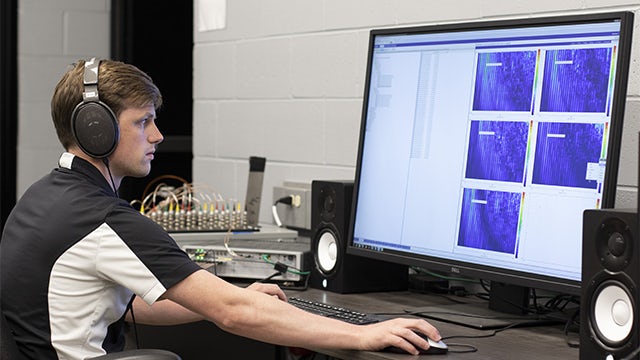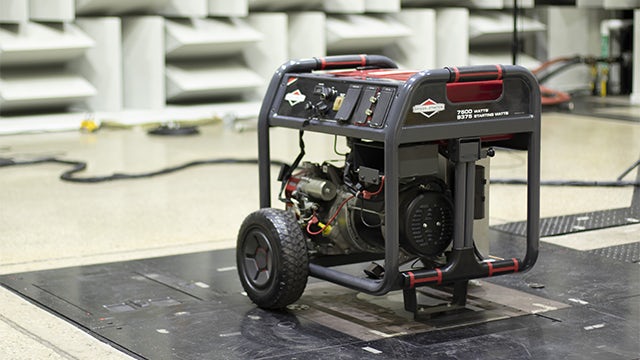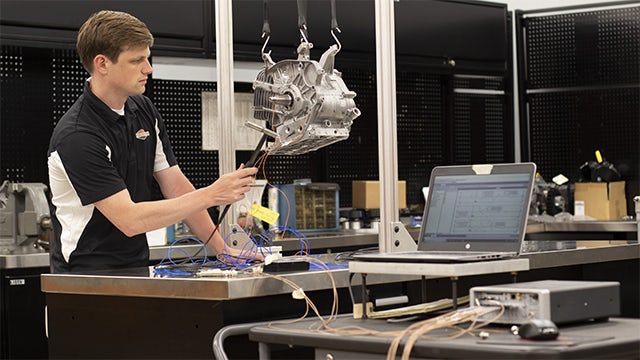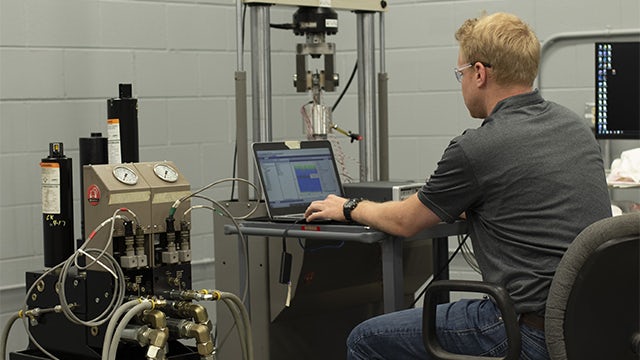Small-engine manufacturer uses Simcenter Testlab and Simcenter SCADAS to achieve product goals early in the development cycle
Siemens Digital Enterprise Software solutions enable Briggs & Stratton to save testing and postprocessing time during analysis...
Briggs & Stratton
Briggs & Stratton Corporation is the world’s largest producer of gasoline engines for outdoor power equipment, and is a leading designer, manufacturer and marketer of power generation, pressure washer, lawn and garden, turf care and job site products. Its products are designed, manufactured, marketed and serviced in over 100 countries.
http://briggsandstratton.com/- Headquarters:
- Milwaukee, Wisconson, United States
- Products:
- SCADAS System, Simcenter Testlab
- Industry Sector:
- Consumer products & retail
With Simcenter Testlab, the data is in the tree, you drag it over, drop it on and you have the data visualized and can easily compare it to older projects.
Briggs & Stratton Corporation
Seeking continuous improvement
Every day, engines are used for all sorts of tasks. From constructing a building, providing power to a clinic during an outage, watering rice fields or simply making the lawn look great, engines are at the heart of it all.
Briggs & Stratton is an American manufacturer of small internal combustion engines with its headquarters in Milwaukee, Wisconsin. The company’s engines are sold in over 100 countries across the globe. Briggs & Stratton engines are most commonly used for lawn mowers, lawn tractors, pressure washers, water pumps, generators and a variety of commercial applications, such as aerators and concrete trowels.
To stay on top of their business, the engineering department is continuously improving engine models and developing new engine families to expand market share and enter into new markets. Its noise, vibration and harshness (NVH) lab is responsible for ensuring that sound and vibration levels are the best-in-class, and that the durability of their products exceed expectations.


Achieving goals early in product development
The Simcenter™ SCADAS hardware data acquisition system and Simcenter Testlab™ software play an integral role in the work of the NVH lab, providing engineers and technicians with a process that enables them to achieve product goals early in the development cycle. The NVH lab consists of a small group of engineers who are experts in the field of NVH and durability. The testing lab currently has four Simcenter SCADAS systems. Two of them are used for acquisition in hemi-anechoic sound chambers and the other two are applied to portable measurements in lab and field conditions.
The engine sound pressure is measured, and the sound power and quality are calculated using Simcenter SCADAS, which is in the control room. Simcenter Testlab is used to monitor live data and processes during the recording, saving testing and postprocessing time during analysis. Simcenter test templates are created for both sound and vibration measurements and are now more easily documented. This improves testing capabilities and ensures common procedures for all the employees in the NVH lab.
Brett Birschbach, senior engineering manager, NVH and durability, comments, “I can’t tell you how many times an engineer has looked over at me and said, ‘This software is really easy to use!’ This is far easier than what we had before because it’s just more flexible.”
“With Simcenter Testlab, the data is in the tree, you drag it over, drop it on and you have the data visualized and can easily compare it to older projects,” says Brett Weed, test engineer in NVH and durability.

Matching design to quality standards
When working with engines, noise level is a primary concern. In Europe, for example, there are multiple certification standards for vibration and pressure-based sound power. Spectral analysis, sound power and quality metrics are considered from the start. The NVH lab engineers looks at the noise sources in their products and adjust the design to match quality standards.
At the Briggs & Stratton testing facilities, most products are tested on concrete, however, they also utilize artifice grass for testing lawn mowers. They also test on load banks – horizontal or vertical, with different speeds and loads – to mimic loading conditions on the applications, as well as to measure the sound the customer is going to hear. The NVH team holds jury testing to determine which sounds are more pleasing to customers.
These types of noise measurements also allow them to perform noise labeling according to the market directives. The NVH team relies on accurate measurements to certify the quality of the products. “We want to be best-in-class in noise and vibration, so we use Simcenter solutions to do the work,” says Birschbach.
Correlating sound and vibration
Engine and application vibration are also recorded using Simcenter to help identify noise sources related to vibration. The engine vibration is measured on an isolated test stand for engine development and auditing using the Simcenter SCADAS data acquisition system. Simcenter Testlab makes it easy to correlate the application sound and vibration and analyze the data to improve them.
“I use Simcenter throughout all my testing; from the beginning of the measurement to the end processing,” comments Weed.
Vibration and strain are also measured on applications undergoing typical field use. Both vibration and strain are measured with Simcenter tools and the recordings are applied to the accelerated testing of engine and finished product. Simcenter SCADAS XS hardware is a portable acquisition equipment system well-suited for these types of measurements. For example, it is important to measure the handlebar vibration of a lawn mower caused by the engine for safety and comfort, making sure it meets guidelines such as the International Organization of Standardization (ISO) 2631 human body vibration standard.

Providing durability
The same equipment is used for durability testing. The data acquired with the system can easily be converted for use on accelerated tests using a shaker or a hydraulic test system. The NVH lab uses strain gauges and fatigue damage spectrum for their accelerated tests. Modal testing is performed using a shaker or a hammer impact on engines and products in the NVH lab with Simcenter testing solutions. The hammer and shaker modal setup in Simcenter Testlab is easy to use and delivers an accurate and repeatable presentation of results.
The processing tools that Simcenter offers provide engineers with the ability to evaluate the engine vibration responses in determining the optimum balance and identifies areas for improvement at the component level, providing a durable product.
Briggs & Stratton’s 200 Vanguard (VG) horizontal engine is an example of this. The 200VG is sold in the commercial market and requires high standards for reliability, ease-of-use and operator comfort.

The advantage of flexibility
For Briggs & Stratton’s NVH test and research and development (R&D) engineers, switching to a token-based licensing strategy proved to be quite beneficial. Simcenter Testlab tokens are a flexible licensing mechanism that gives users access to a large library of software modules for doing testing and data analysis. Unlike fixed item licensing, in which only specifically purchased licenses can be used, the Simcenter Testlab token licensing option allows users to run any combination of token-enabled software modules.
Every problem is different and requires different tools, and with the token system, all tools are at hand.
“One of the things we like about Simcenter Testlab is the token-based licensing,” says Birschbach. “It opens up a whole world of possibilities. It allows us the freedom to do different analyses when we need to. If we want to do modal analysis one day and durability life prediction the next day, and if we need to do sound quality analysis after that, we can! I’m not forced into buying individual software. That flexibility was huge, as we are a relatively small NVH group.”
The token system allows engineers to test innovations as they arise, enabling them to discover new techniques.
Siemens’ support has also been facilitating testing for engineers at the Briggs & Stratton NVH lab. As Birschbach comments, “Support is critical for a company like ours, and our support experience with Siemens has been exceptional. The level of support you get is remarkable. You not only get support immediately on the call, but if the issue cannot be resolved right away, you are going to have a solution as soon as possible. And not only for problems; if we have any questions, we can always call and they will give us advice, which has been very helpful to us.”
The Briggs & Stratton NVH lab plans on extending their capabilities in the future by implementing new features offered by the Simcenter portfolio in their testing to achieve consistent power without the noise.
I can’t tell you how many times an engineer has looked over at me and said, ‘This software is really easy to use!’ This is far easier than what we had before because it’s just more flexible.
Briggs & Stratton Corporation